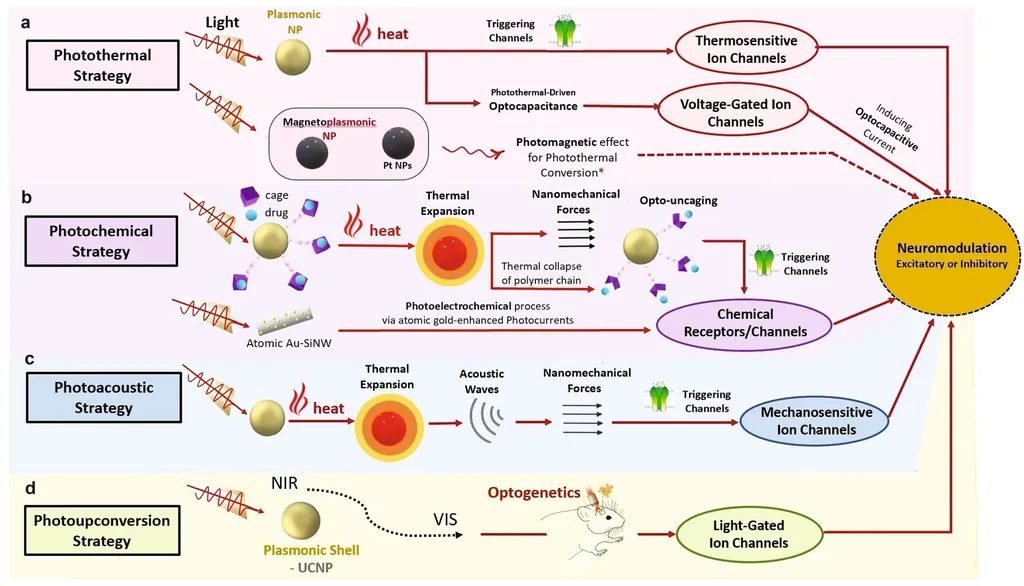In a groundbreaking study published in the journal *Exploration of BioMat-X* (translated as *Exploration of BioMaterials-X*), researchers have unveiled a novel method for synthesizing and characterizing plasmonic nanoparticles, with potential implications for the energy sector. Led by Hamid Nadjari from the Department of Physics at the University of Zanjan in Iran, the research focuses on the synthesis of gold and silver nanoparticles using laser ablation, followed by illumination with a nanosecond laser pulse. The study not only demonstrates a significant shift in the plasmon resonance frequencies of these nanoparticles but also provides a robust method for reconstructing their absorption spectra using Mie theory.
Plasmonic nanoparticles, known for their unique optical properties, have garnered significant attention in various fields, including energy harvesting, sensing, and catalysis. The ability to control and predict their behavior is crucial for advancing technologies such as photovoltaics, photocatalysis, and optical sensors. Nadjari and his team have taken a significant step in this direction by investigating the effects of laser illumination on the size distribution and dielectric functions of gold and silver nanoparticles.
The researchers prepared colloidal gold and silver nanoparticles by ablating their respective foils in water using a 1,064 nm pulsed Nd:YAG laser. The resulting nanoparticles were then illuminated with the laser’s 532 nm second harmonic pulse. This process induced a blue shift in the peak position of the absorption spectra, with a 1 nm shift observed for gold colloids and a 4 nm shift for silver colloids. “This shift indicates a reduction in nanoparticle size, which is a critical factor in tuning their optical properties,” Nadjari explained.
Using micrographs, the team plotted the size distribution of the nanoparticles and employed Mie theory along with a size-dependent dielectric function to reconstruct the absorption spectrum. This reconstruction allowed them to estimate a 12-fold increase in the number of gold nanoparticles and a 16-fold increase in silver nanoparticles due to illumination. “The reconstruction of the absorption spectrum using Mie theory provides a powerful tool for understanding and predicting the behavior of these nanoparticles under different conditions,” Nadjari added.
The implications of this research are far-reaching, particularly for the energy sector. Plasmonic nanoparticles play a pivotal role in enhancing the efficiency of solar cells and photocatalytic processes. By precisely controlling the size and optical properties of these nanoparticles, researchers can optimize their performance in various energy applications. The method developed by Nadjari and his team offers a promising avenue for achieving this control, potentially leading to more efficient and cost-effective energy technologies.
Moreover, the study highlights the importance of understanding the size effects on the dielectric function of nanoparticles. This knowledge is crucial for designing nanoparticles with tailored optical properties for specific applications. As Nadjari noted, “Our findings not only advance the fundamental understanding of plasmonic nanoparticles but also pave the way for their practical applications in energy and other fields.”
The research published in *Exploration of BioMat-X* represents a significant advancement in the field of plasmonic nanoparticles. By combining experimental synthesis with theoretical modeling, Nadjari and his team have provided valuable insights into the behavior of these nanoparticles under laser illumination. Their work is expected to inspire further research and development in the field, ultimately contributing to the creation of more efficient and sustainable energy technologies.

